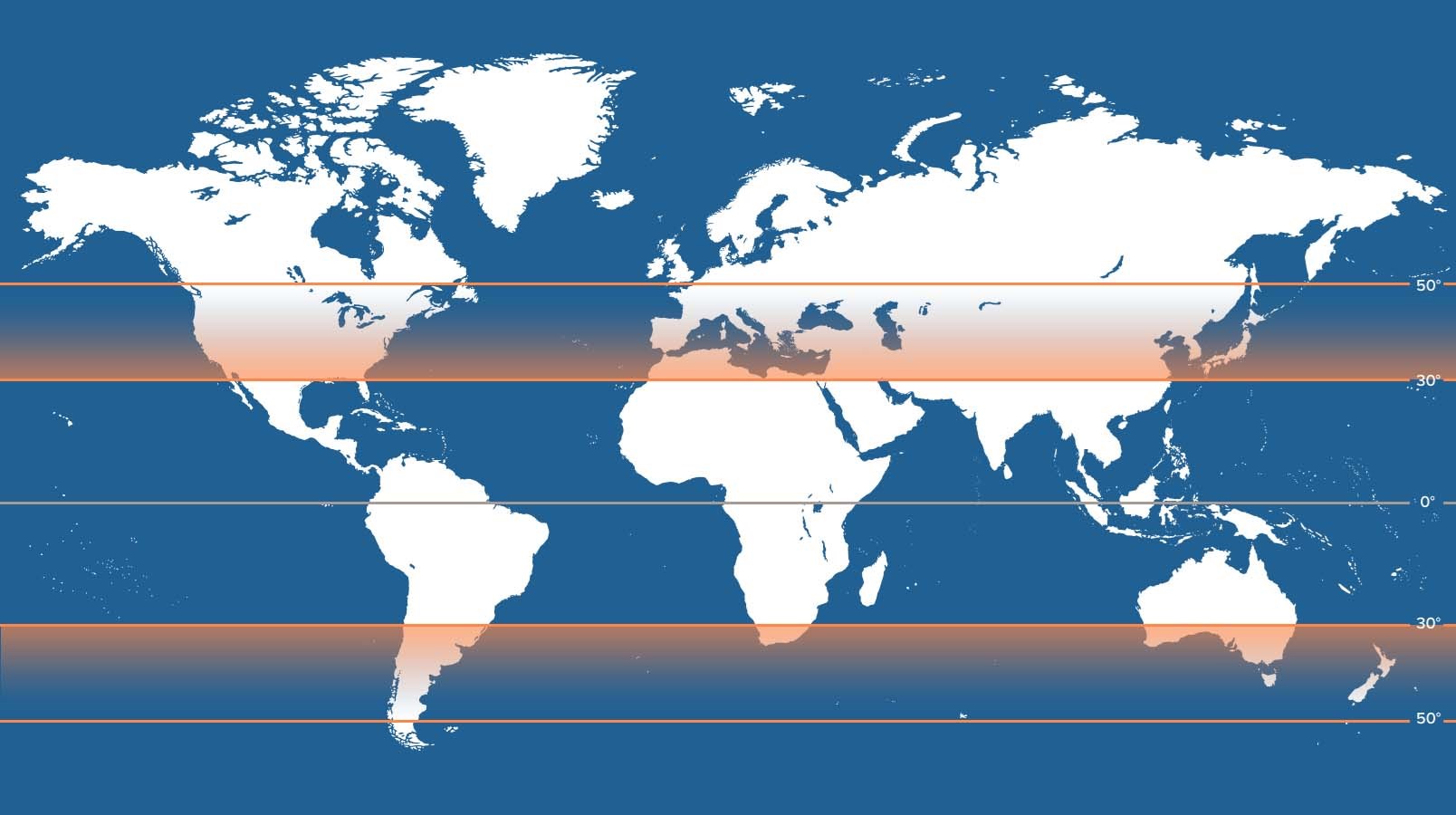Geography can have an enormous impact on the way that your wine tastes. Temperature, altitude, types of soil - the place where the grapes are grown and how they are able to ripen, determines so much about the character of the final product.
Temperature
Many parts of the world are simply too cold or too hot to grow grapes successfully. A vine requires the right amount of water, nutrients, sunlight, and warmth to flourish.
Less ripe grapes typically produce wines with less alcohol, more acidity, and fresh fruit aromas. At the other end of the spectrum, very ripe grapes will have higher sugar levels, often resulting in more alcoholic wines with very ripe or even cooked fruit flavours.
If conditions are too cool, the grapes won’t ripen. If it’s too warm, they can over-ripen, producing wines with unpleasant flavours and little freshness.
Optimal conditions are generally found between 30- and 50-degrees latitude on either side of the equator. The closer you get to the equator, the warmer it becomes, and cooling influences such as sea breezes or mountain air may be needed to prevent the vineyard from getting too hot.
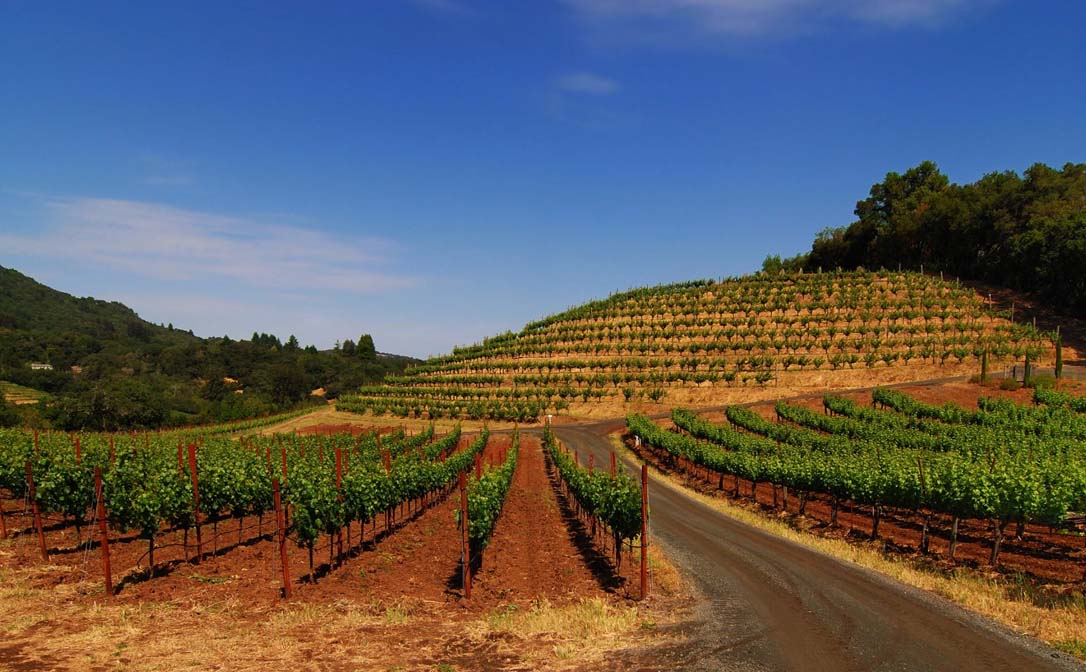 Vineyards in Sonoma, California. California is among some of the warmest wine regions in the world.
Vineyards in Sonoma, California. California is among some of the warmest wine regions in the world.
As you go further from the equator, the reverse is true. Here, factors that maximise warmth and sunlight may be necessary to help ripen the grapes.
Alongside latitude, many other factors can affect grape ripening.
Even in regions famous for their grapes, the location and aspect of an individual vineyard can make a monumental difference to the final wine.
Slopes
Most vineyards are located on at least a gentle slope, and in some cases, these can be extremely steep.
The angle of the slope will impact how much sunshine the vines have access to. A vineyard facing towards the equator will be warmer and sunnier than one facing away from it.
Slopes can also help with avoiding frosts. Cool air tends to tumble down the hill and collect at the bottom, meaning that vineyards on slopes are less affected by frost than those on the valley floor.
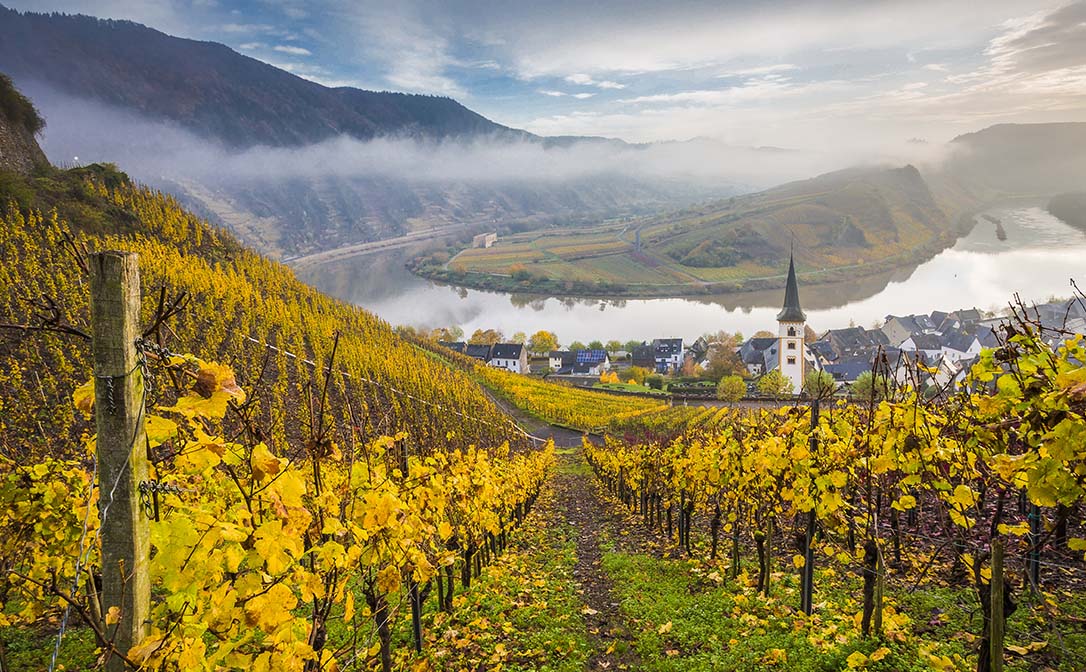 The sloped vineyards of the Mosel Valley, Germany
The sloped vineyards of the Mosel Valley, Germany
Altitude
In warmer climates, altitude can provide some relief from the heat. For every 100 metres (328 feet) you climb above sea level, the temperature drops approximately 0.6 degrees Celsius (33 degrees Fahrenheit).
This is particularly important in regions such as Argentina’s Mendoza, where vineyards can be found at over well over 1,000 metres (3280 feet) above sea level.
If you’d like to learn more about grape growing regions around the world, the WSET Level 2 Award in Wines offers insights into the style and quality of wines made from grapes grown in over 70 different regions.
Click here to find out more.
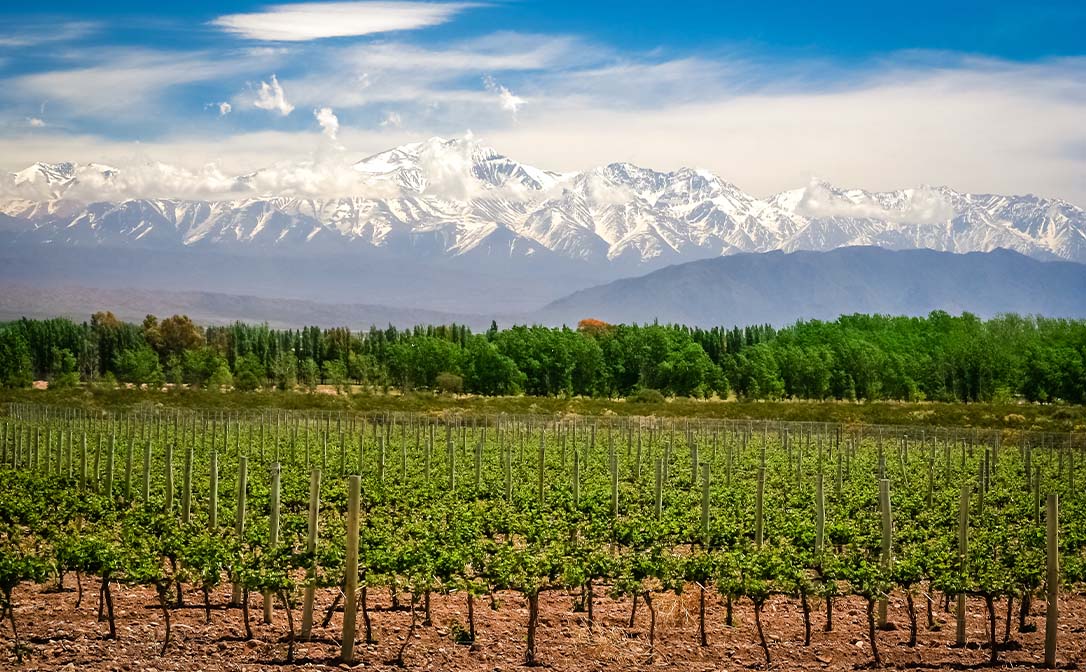 The vineyards of Mendoza, Argentina, are some of the highest in the world.
The vineyards of Mendoza, Argentina, are some of the highest in the world.
The cooling influence of the Andes mountains slows down the ripening process and helps to retain all-important freshness in the grapes.
Oceans
Proximity to a cold ocean can also provide some relief in a warm region. The more exposed a vineyard is to the ocean, the cooler and windier it tends to be.
The air is often damp, so mists and fogs may build up in the morning, which can further cool the vineyard and provide protection from the strong sunshine.
Soil
The soil in each vineyard site can also magnify the effects of the climate. For example, light-coloured soils will reflect sunlight, whereas dark, stony soils will store and radiate warmth.
Soils that contain a lot of clay will usually be cooler as they absorb and retain water incredibly well. This is something that can be extremely useful in drier climates.
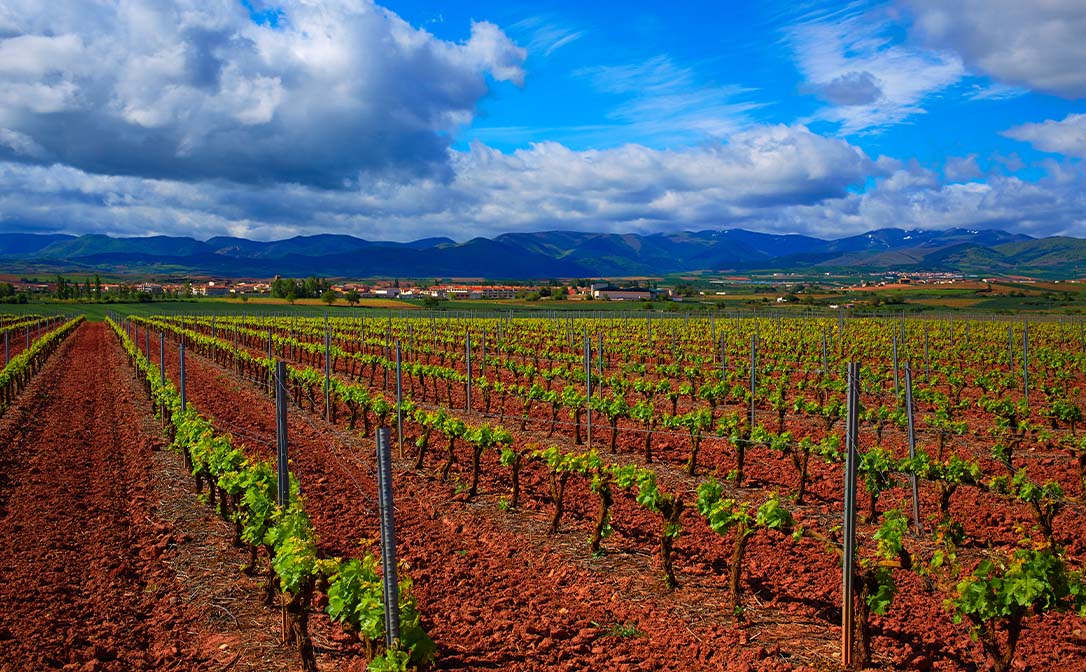 Clay soils of Rioja, Spain
Clay soils of Rioja, Spain
All these different factors combine to make every vineyard site unique, accounting for the immense variety of wine styles available for you to enjoy!
If you want to experience the influence of geography for yourself, try comparing a Chardonnay from Northern France with one from a sunny spot in California - you will be sure to notice a significant difference in the style of the wine.
Related content:


